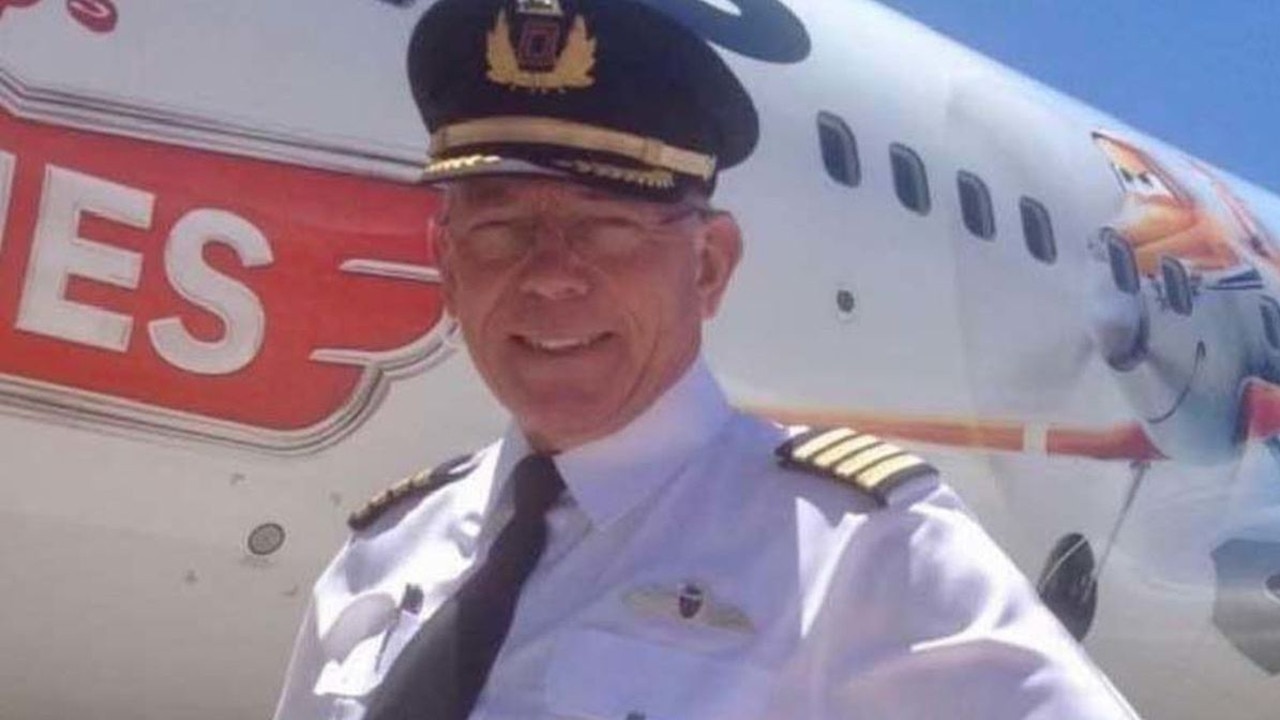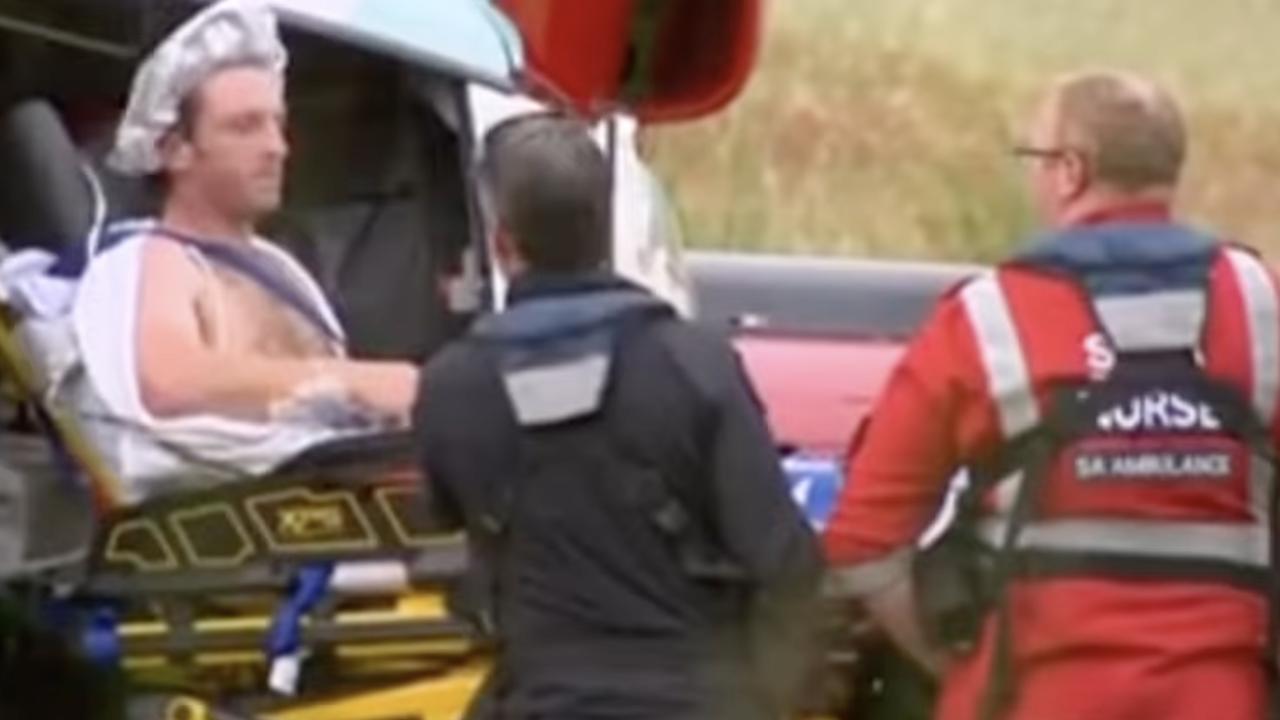Three sailors rescued from Coral Sea after shark attacks
Fresh details have emerged about the incredible rescue mission that saved three sailors from a night-time shark attack.
Fresh details have emerged about the dramatic rescue mission that saved three sailors from a terrifying night-time shark attack.
Two Russians, Evgeny Kovalevsky and Stanislav Berezkin, and French national Vincent Thomas Garate Etienne were sailing on a 9m inflatable catamaran from Vanuatu to Cairns when they sent out a radio distress beacon at 1.30am after large sections of the vessel were removed in the shark frenzy.
Images captured by the Australian Maritime Safety Authority (AMSA) show the catamaran taking on water in the Coral Sea as rescue efforts began.
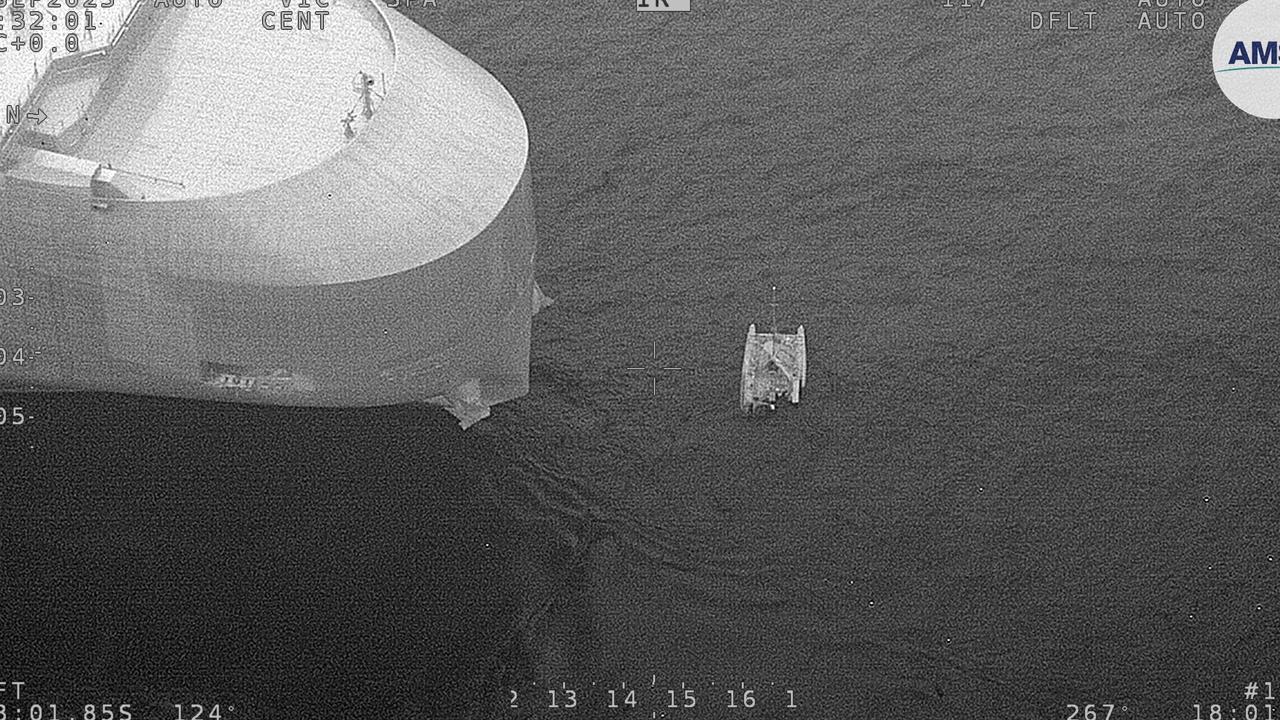
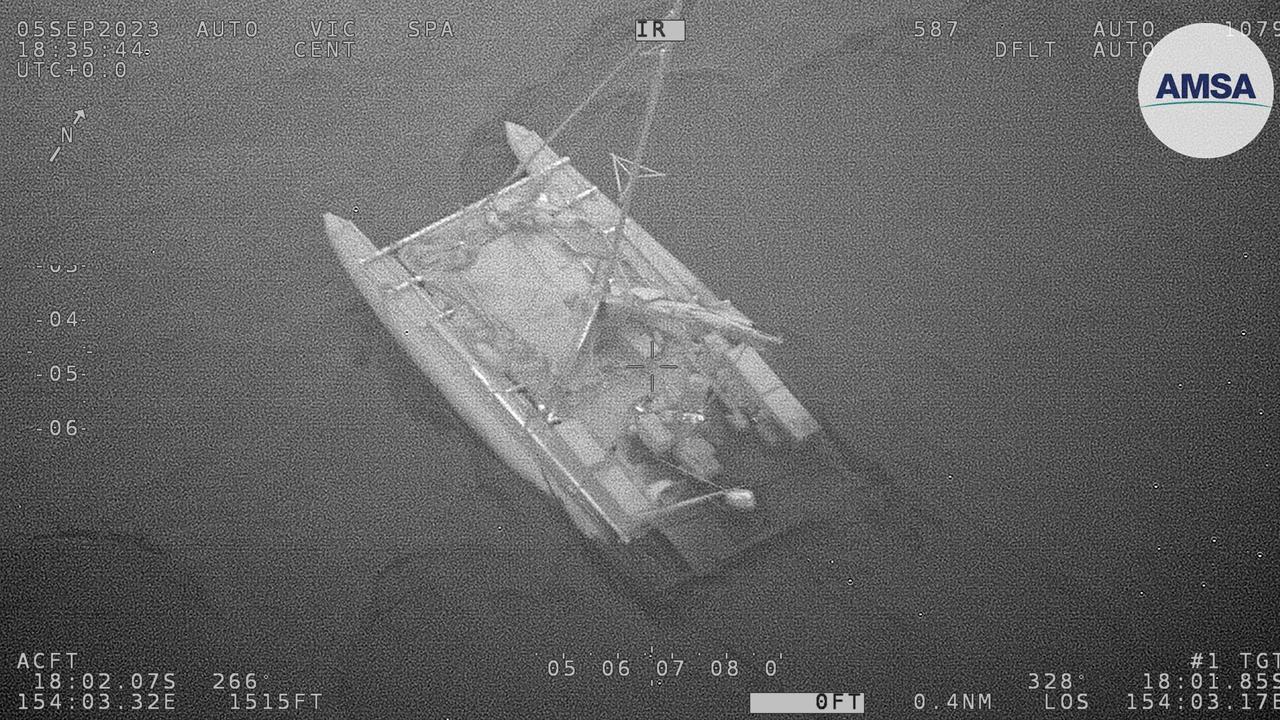
AMSA picked up the distress call and requested help from the Panama-flagged vehicle carrier Dugong Ace, which was 30 nautical miles away and diverted course to rescue the sailors about 835km southeast of Cairns.
AMSA Response Centre duty manager Joe Zeller said it was “extraordinarily lucky” the Dugong Ace was so close.
“The ocean is just so vast,” he said on Wednesday.
“It is very rare to have a vessel of opportunity so close during the time of distress, particularly in the open ocean like that.”
The Dugong Ace and Cairns-based Challenger Rescue Aircraft arrived by the sinking catamaran at 4.30am.
The sailors climbed a ladder to transfer from the damaged vessel to the massive carrier.
“It is an extraordinarily high climb as well, from the sea level to the waist of the vehicle carrier,” Mr Zeller said.
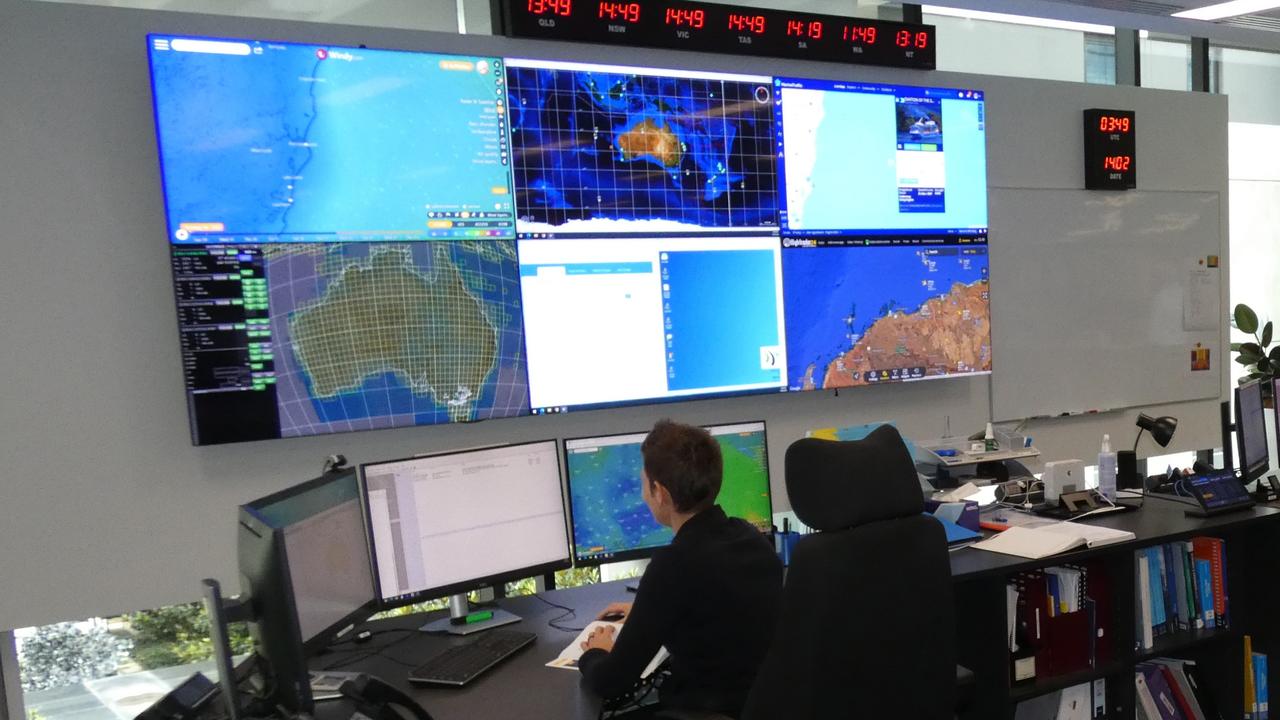
The rescue effort, organised by four AMSA staffers on night shift at the Canberra response centre, kicked off at 1.30am.
AMSA’s first call was to the Russian rescue co-ordination centre in Moscow that gave out the registration details of the beacon.
Mr Zeller said the team identified the vessel name, crew details and a telephone number linked to the beacon.
AMSA operators called the sailors to find out the nature of the distress.
“It was very helpful because they were able to understand what the nature of the distress was, the level of urgency,” Mr Zeller said.
“Their boat was inoperable and they needed rescuing and removing from the vessel as soon as possible.
“The sailors reported to us that shark attacks had removed large sections of their vessel.”
The Dugong Ace was travelling from Port Kembla in NSW to Shanghai but diverted to rescue the sailors and take them to Brisbane, with the ship expected there on Thursday morning.

“We would certainly like to convey our thanks to the master and crew of the Dugong Ace who, in the finest tradition of seafarers, have come to the rescue of three sailors in need,” Mr Zeller said.
“The joy of search and rescue is that it does transcend geopolitics.”
Mr Zeller said if the Dugong Ace had not been so close by, AMSA would have dispatched rescue aircraft to maintain contact with the sailors, possibly throwing out life rafts for them as they waited for another vessel to take up the rescue.
The Russians were retracing the around-the-world voyages conducted by Russian explorers in the 19th century.
On June 12, Mr Berezkin posted to social media the “Russian Ocean Way” expedition had stopped at Taravao in French Polynesia and was looking for crew members to get to Cairns.
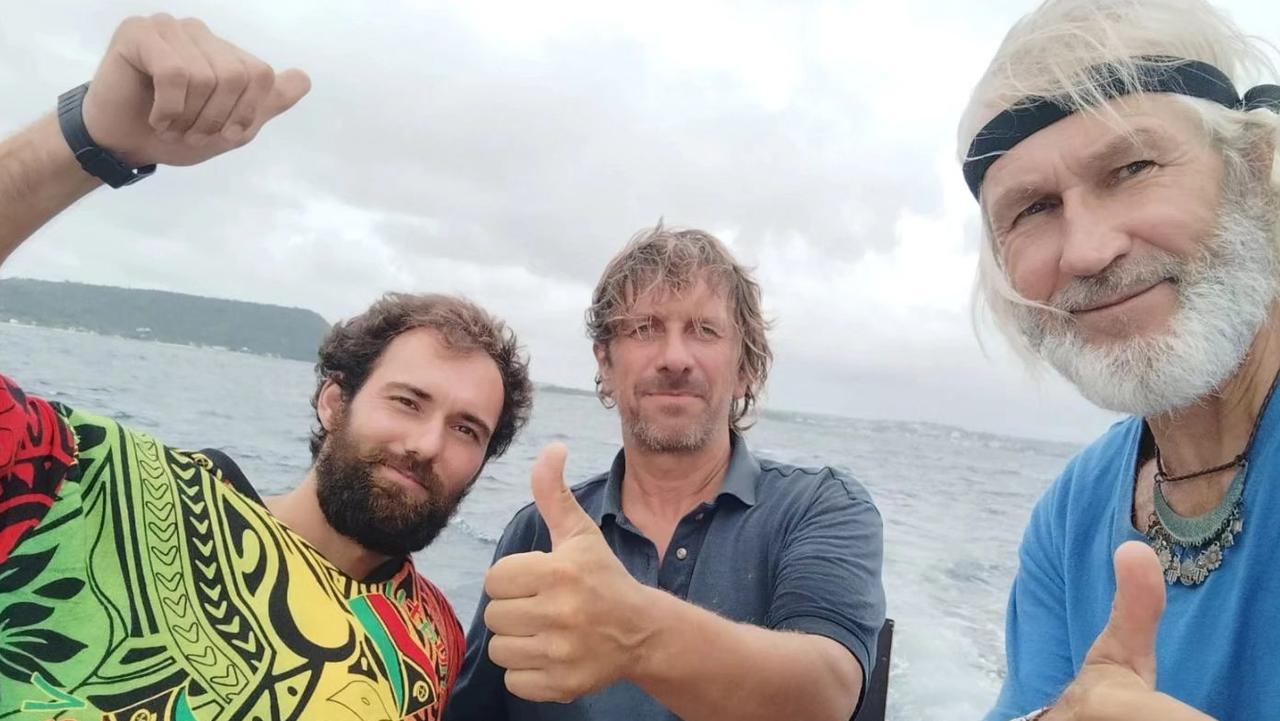
“‘Russian Ocean Way’ expedition looks for two crew members to legs: Tahiti – Samoa, Samoa – Fiji, Fiji – Noumea, Noumea – Cairns,” he wrote on June 12.
“Our boat is experimental inflatable catamaran, we arrived to Tahiti from Rapa Nui 5.06.2023 from Rapa Nui, planning to start at end of June.
“Our boat is in Taravao.
“If you want take part in any leg, write me to messenger.”
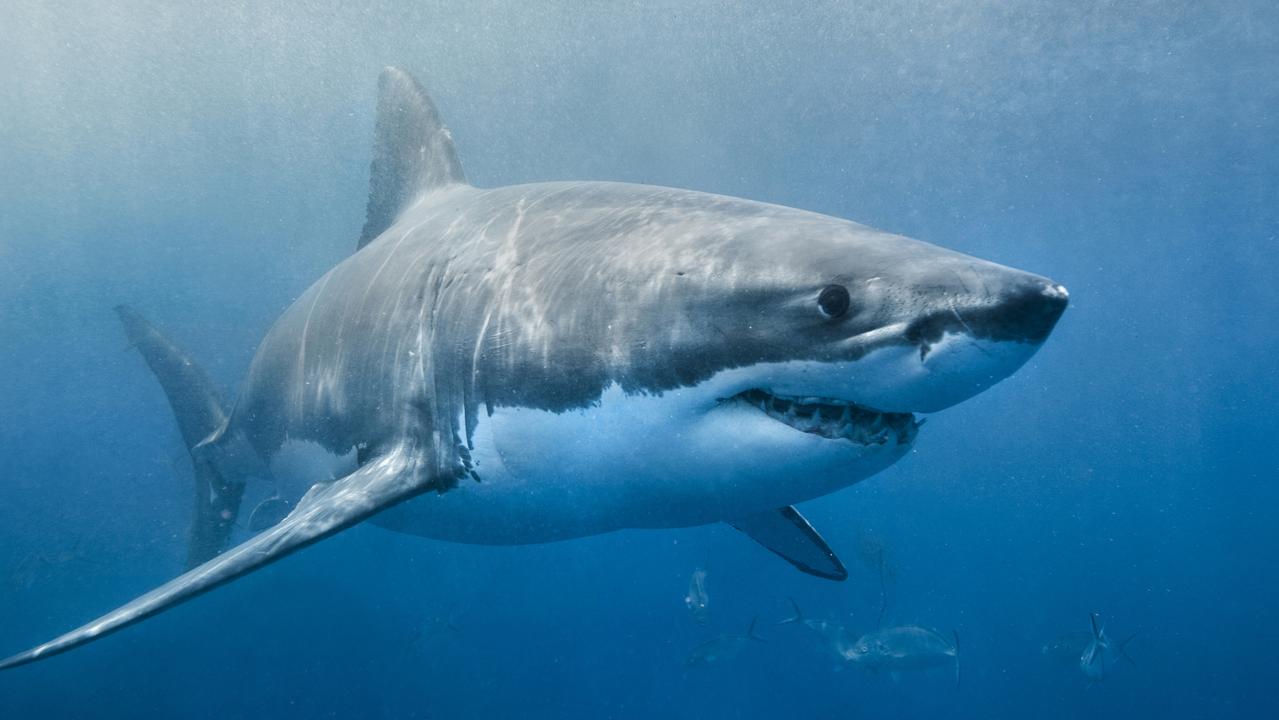
They left St Petersburg in July 2021 on their planned three-year odyssey.
The Russian Geographical Society reports the sailors left the Vanuatu coast on August 28 and planned to land in Cairns two weeks later on September 11.
“We set off from Vanuatu, from the island of Efate, where we had been moored for a week, made repairs,” Mr Kovalevsky said.
“We are going to Cairns, Australia. The waves are up to three metres, the breeze is up to 20 knots, probably. At times it will pick up to all 25.”
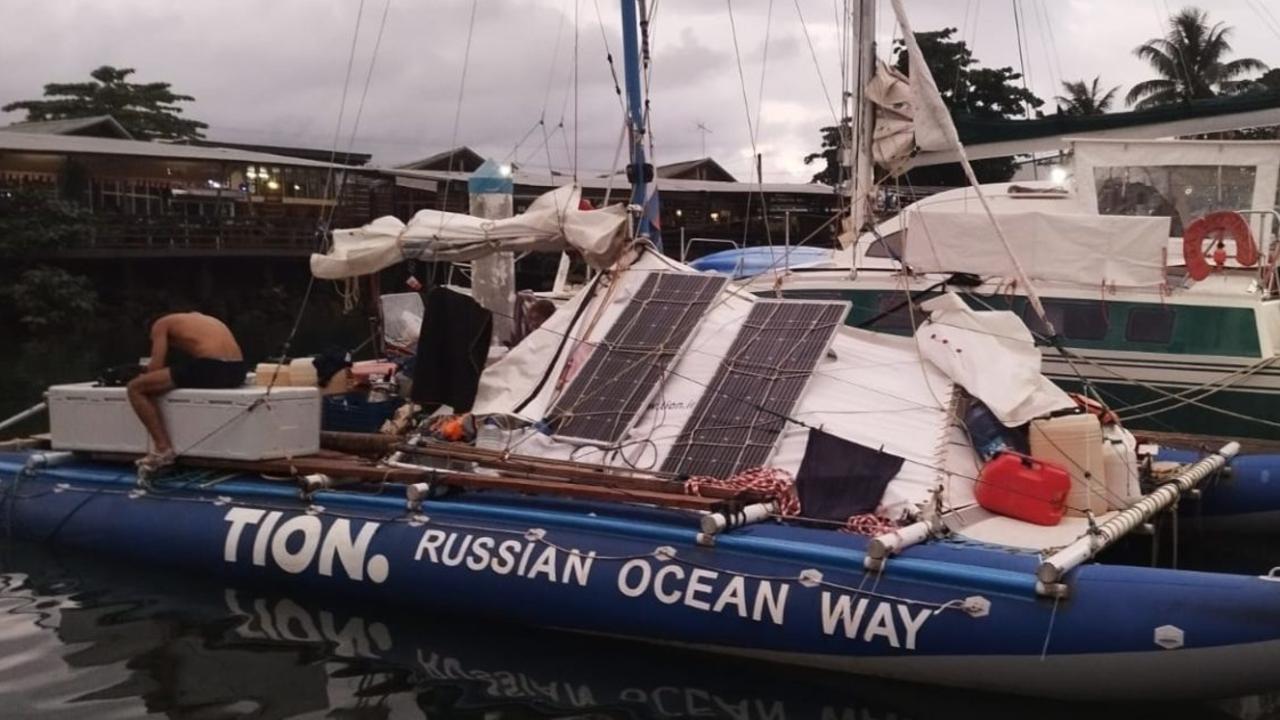
The sailors spent 10 days in Vanuatu repairing their catamaran, named Tion, which had already suffered damage from shark attacks.
“The hull fractures were sealed, the hermetic sealing of the tent was strengthened, four two-meter bars were placed along the bow to feel more confident on big waves, the rigging and sailing equipment were repaired,” the society reported on August 29.
“During the inspection of the catamaran, many bite marks of small ‘cigar’ sharks were found. It’s good that they don’t have enough strength to bite through the dense material.”


